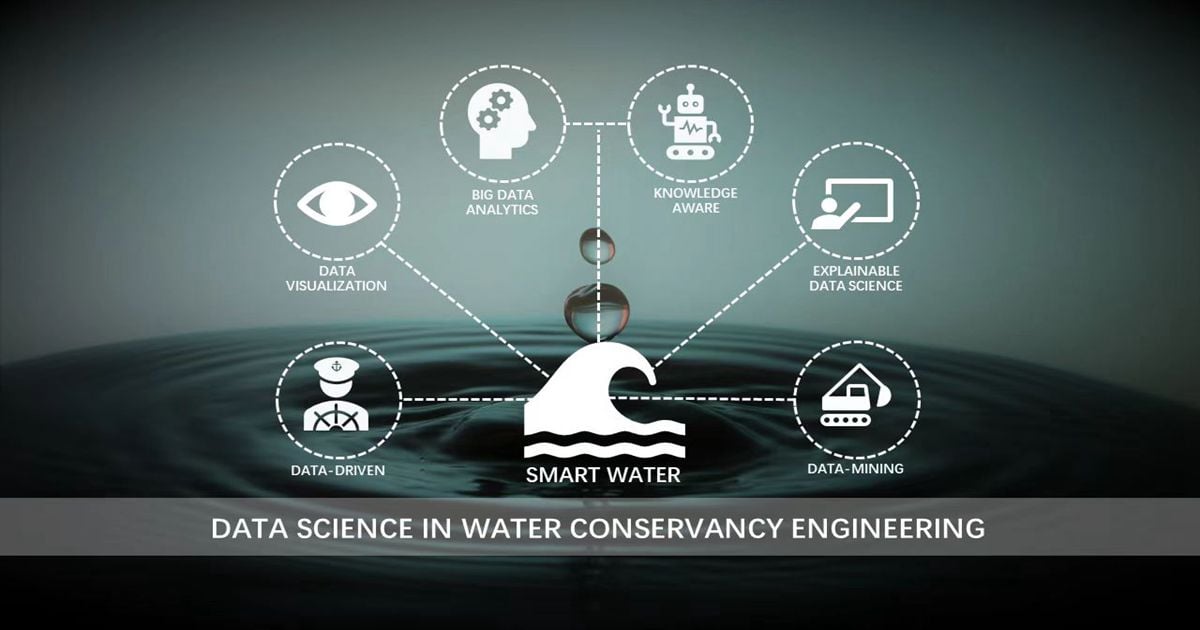- 2.5Impact Factor
- 5.5CiteScore
- 20 daysTime to First Decision
Data Science in Water Conservancy Engineering
This special issue belongs to the section “Computing and Artificial Intelligence“.
Special Issue Information
Dear Colleagues,
With the development of water conservancy engineering and the construction of infrastructure, water resources are properly managed and protected, contributing to the economic growth. It is noted that the social progress has exposed the drawbacks of current water conservancy engineering, and the management efficiency of water resources is low. The key reason lies in the lack of involving both expert experience and data intelligent to overcome the backwardness of current management technology. Therefore, water conservancy engineering needs intelligent management technology. As a promising field of data statistics, data science has shown considerable potential in the collection, analysis and utilization of water conservancy data. Recent research shows that there are various data science methods that have been used to meet the relevant needs of other fields, and have shown excellent performance. How to apply existing data science methods in water conservancy engineering, or realize new data science technologies more suitable for water conservancy scenarios, is of great significance for water conservancy data management.
Combined with applied mathematics, statistics, pattern recognition, machine learning and other methods, data science can predict, interpret and make decisions on water conservancy data by studying the “data world”. In addition, reliable data science methods should be customized or have an interpretable theoretical basis to promote the continuous progress and leapfrog development of water conservancy engineering. This Research Topic focuses on data science in water conservancy engineering, including data collection, data analysis, data decision-making and other related technological innovations. In order to connect novel data science with water conservancy engineering, and stimulate the potential of data science in water conservancy, this research welcomes researchers and practitioners from academia and industry to explore more new applications and technological innovations.
The topics of interest for this Special Issue include, but are not limited to:
- Data mining in water conservancy engineering;
- Data governance technology in water conservancy engineering;
- Big data analytics in water conservancy engineering;
- Data-driven technology in water conservancy engineering;
- Knowledge-aware technology in water conservancy engineering;
- Explainable data science in water conservancy engineering;
- Visualization of data science in water conservancy engineering;
- Data science applications in water conservancy engineering.
Prof. Dr. Jun Feng
Dr. Yirui Wu
Dr. Xiaodong Li
Guest Editors
Manuscript Submission Information
Manuscripts should be submitted online at www.mdpi.com by registering and logging in to this website. Once you are registered, click here to go to the submission form. Manuscripts can be submitted until the deadline. All submissions that pass pre-check are peer-reviewed. Accepted papers will be published continuously in the journal (as soon as accepted) and will be listed together on the special issue website. Research articles, review articles as well as short communications are invited. For planned papers, a title and short abstract (about 250 words) can be sent to the Editorial Office for assessment.
Submitted manuscripts should not have been published previously, nor be under consideration for publication elsewhere (except conference proceedings papers). All manuscripts are thoroughly refereed through a single-blind peer-review process. A guide for authors and other relevant information for submission of manuscripts is available on the Instructions for Authors page. Applied Sciences is an international peer-reviewed open access semimonthly journal published by MDPI.
Please visit the Instructions for Authors page before submitting a manuscript. The Article Processing Charge (APC) for publication in this open access journal is 2400 CHF (Swiss Francs). Submitted papers should be well formatted and use good English. Authors may use MDPI's English editing service prior to publication or during author revisions.
Keywords
- smart water conservancy
- data science
- data mining and governance
- big data analytics
- explainable data science
- data driven
- knowledge-aware
- visualization and applications

Benefits of Publishing in a Special Issue
- Ease of navigation: Grouping papers by topic helps scholars navigate broad scope journals more efficiently.
- Greater discoverability: Special Issues support the reach and impact of scientific research. Articles in Special Issues are more discoverable and cited more frequently.
- Expansion of research network: Special Issues facilitate connections among authors, fostering scientific collaborations.
- External promotion: Articles in Special Issues are often promoted through the journal's social media, increasing their visibility.
- e-Book format: Special Issues with more than 10 articles can be published as dedicated e-books, ensuring wide and rapid dissemination.

